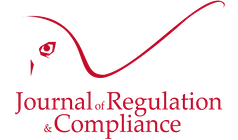II-6.7 : The Ordinance of 21 January 2010 merges the regulatory authorities for the banking and insurance sectors.
http://www.thejournalofregulation.com/spip.php?article142

Main information
Ordinance n° 2010-76 of 21 January 2010 establishes a new independent administrative authority designated as the Autorité de contrôle prudentiel (Prudential Control Authority), resulting from the merger of the approval and monitoring authorities of the banking and insurance sectors.
Context and Summary
Following the conclusions of the General Finance Inspectorate advising a merger of the monitoring authorities for banks and insurance companies, Ordinance n° 2010-76 of 21 January 2010 establishes a new monitoring authority designated as the Autorité de contrôle prudentiel (Prudential Control Authority) in charge of ensuring (i) consumer protection, (ii) financial stability at a national and European scale, and (iii) French influence on international negotiations on the reform of financial regulation. The establishment of the Autorité de contrôle prudentiel thus leads to an in-depth modification of the face of financial and banking regulations. Previously, four authorities coexisted:
The establishment of the Autorité de contrôle prudentiel also aims at reinforcing monitoring of consumer financial products. Therefore, a structured collaboration between the Authority and the Autorité des Marchés Financiers has been established. It involves a “ common pool” (Article 1 of the Ordinance of 21 January 2010) in charge of monitoring changes in financial products, ensuring common supervision of financial products advertising, and implementing a single help-desk for all questions concerning consumer financial products.
Brief commentary
The Ordinance of 21 January 2010 results in an in-depth modification of the previous regulatory system, for it merges the four previous insurance and banking authorities into the new Autorité de contrôle prudentiel (Prudential Control Authority). This new, single authority is a perfect illustration of the subprime crisis' major consequences for regulation: the development of macroprudential regulation. The subprime crisis indeed highlighted the interconnections between the financial, banking and insurance sectors and highlighted the necessity of reshaping regulation in order provide a coherent response to financial issues. However, it must be emphasized that the merger did not include the Autorité des Marchés Financiers (the Financial Markets Authority). Parliament preserved the independence of the Autorité des Marchés Financiers and preferred an active collaboration through the concept of a 'common pool', rather than a complete merger. This corresponds to the well-tried scheme of regulator networks.
Therefore, in opposition to the microprudential conception that is concerned with the individual institutional default risk, a macroprudential approach that aims at limiting the systemic risk affecting the whole financial sector is today favoured. Nevertheless, the prudential perspective and the regulatory approach are not the same, for the former favours internal risks affecting actors, whereas the latter focuses on external risks proper to the markets, and that because regulation is naturally linked to sectors and markets, it does not concern itself with corporations, governance, internal control and ratios… In the future, one of the major issues at stake shall certainly be to find the best articulation between the prudential and the regulatory approach.
The Prudential Control Authority offers a basis to these promises for better interregulation. On one hand, the merger of the banking and insurance authorities, and their reinforced collaboration with the Autorité des Marchés Financiers offers a possibility to overcome a sectorial approach and to systemically conceive regulation. On the other hand, this approach favours dialogue between the different branches of the financial area lato sensu, and achieving a common response that takes into account the special risks affecting each sector.
It should finally be underlined that the Ordinance includes financial stability at the European level among the missions of the Prudential Control Authority. Macroprudential regulation therefore illustrates the scope of a systemic conception, where the financial sector has no borders. The European Union thus offers a favourable field for common action in order to prevent correlated risks. The problem may however be that the financial market is larger than the European Union, for it is a global market. In this regard, American banking and financial regulation schemes are built on very different bases than in Europe. For instance, American regulation uses direct and frontal intervention in banking and insurance companies, regulating their size and business. This fundamental difference within Western markets, whose business is naturally unified, is a major regulatory issue.

votre commentaire